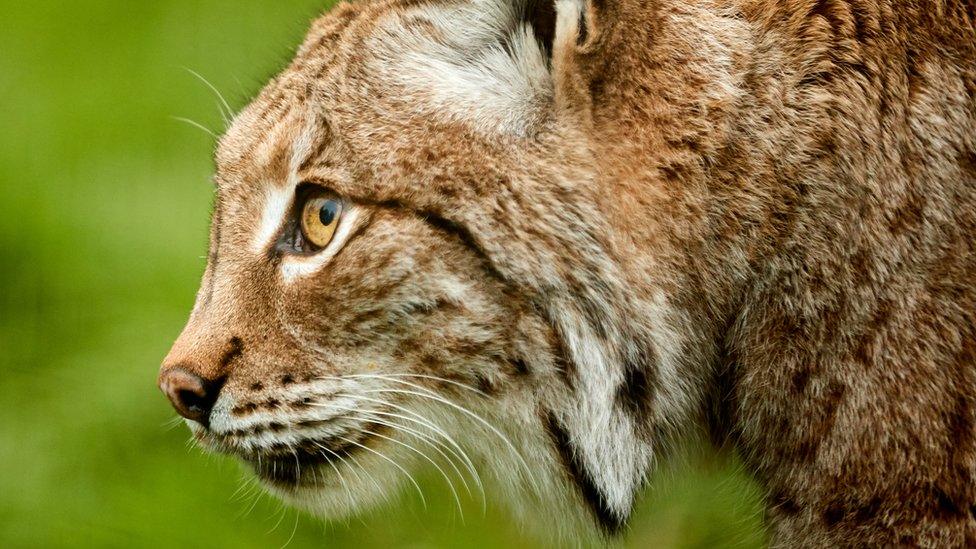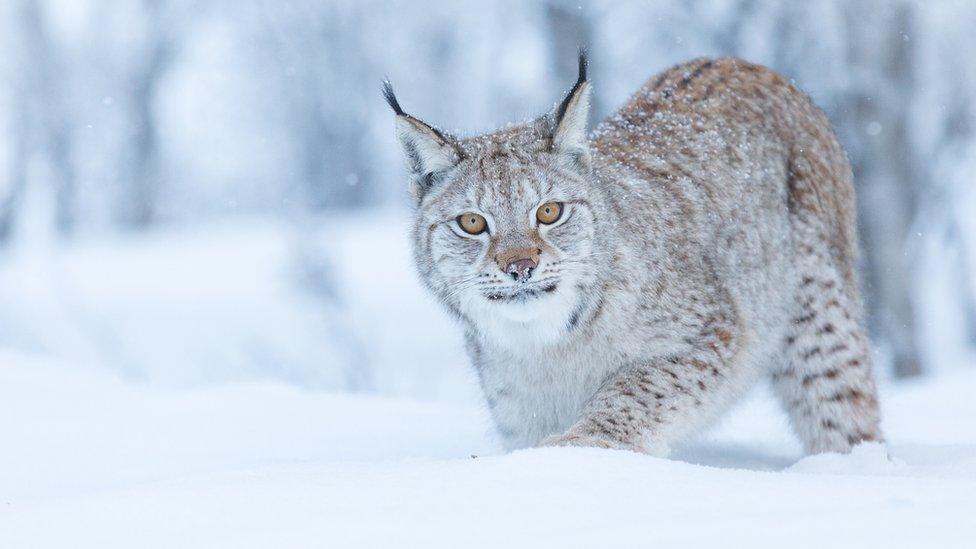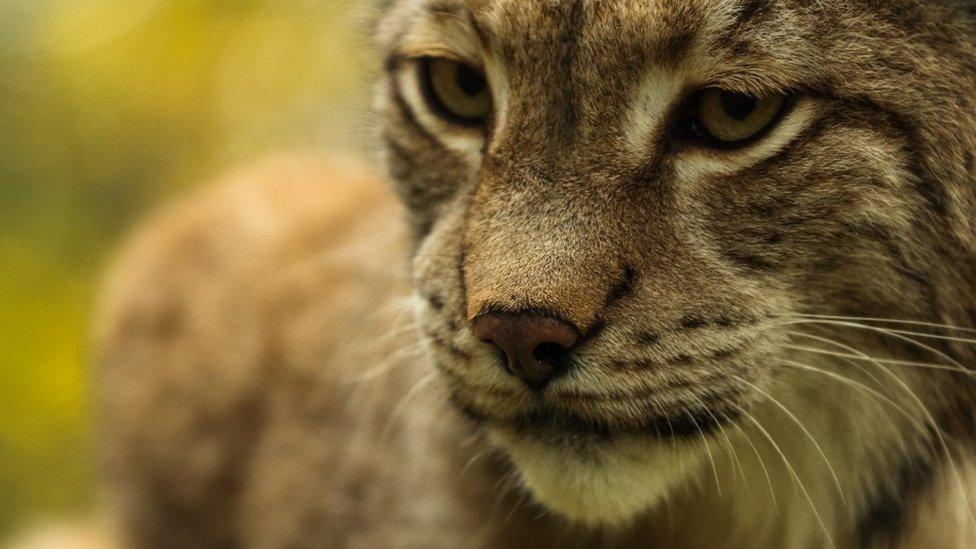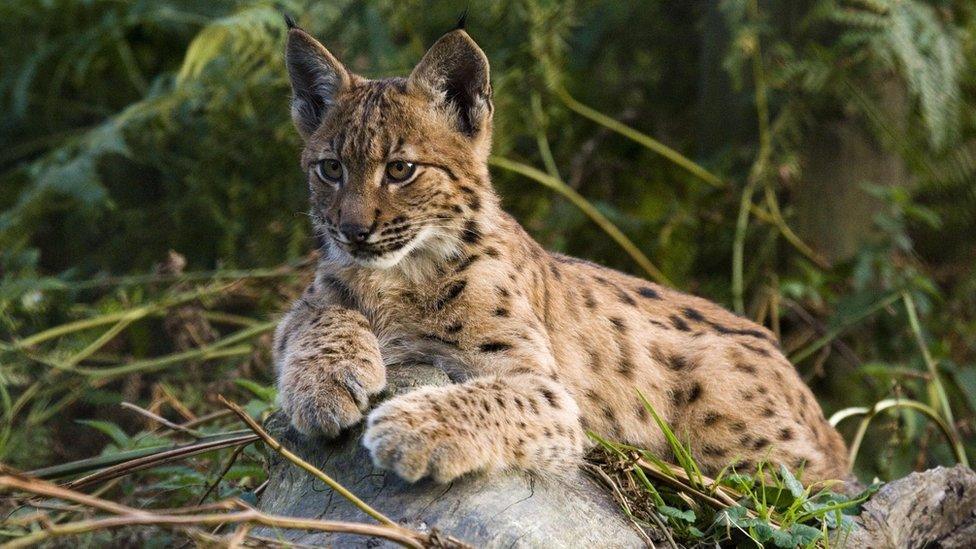Opinions divided over reintroduction of lynx to Scotland
- Published

Lynx were once native to Britain
The first detailed social feasibility study into a trial reintroduction of lynx to Scotland has found that opinions on the idea are divided.
The wild cats were once native to Britain but were driven to extinction 500 to 1,000 years ago.
The Lynx to Scotland project commissioned the research, external in the Cairngorms National Park and Argyll.
The study identified some support for bringing back lynx but found opposition among rural residents and workers.
The perceived benefits included ecotourism and lynx helping to control roe deer numbers in areas where they damage woodland, but there were concerns that lynx could prey on livestock.
According to the researchers, there was very little concern that the cats posed any danger to people.
But they also said there was general agreement the wider public did not know enough about lynx to make informed decisions on whether they should return.
Lynx to Scotland said the study showed a successful reintroduction was dependent on people's attitudes, and it believed a trial could still be possible in the future.
Peter Cairns of Scotland: The Big Picture, one of the charities involved in the project, said: "When it comes to the return of the lynx, we're in the realm of not yet - but not never.
"Positively, this new research shows there is sufficient appetite amongst different stakeholders to develop a more comprehensive understanding of this little-known species and the potential for its return to Scotland."

Workers and communities in the Cairngorms National Park and Argyll were asked about bringing back lynx
Trees for Life, a landscape conservation charity based in Moray, and Herefordshire-based Vincent Wildlife Trust are also involved in the project.
The year-long study sought the views of rural workers and communities, interviewing farmers, foresters, gamekeepers and conservationists.
Roe deer would be expected to be the main prey for lynx, if reintroduced to Scotland. The study suggested some deer managers and foresters felt lynx could be useful in controlling numbers in areas of dense woodland, where it was difficult to conduct culls.
But others were sceptical and said there were not enough deer, or the good quality woodland habitat that lynx favour, in parts of the Highlands deemed to be suitable for a trial.
The researchers said there were concerns about lynx attacking sheep, but that views differed on how much of a problem it would be.
Those in support of a reintroduction said lynx would help to create more balanced, biodiverse woodland ecosystems.
Some supporters also argued the cats would be good for wildlife tourism and a boost for local communities.
But opponents said they felt the ecotourism benefits of lynx were overblown.


Reintroducing the predators which once stalked these now tamed lands is never a simple task. For centuries we've grown used to being top of the tree, able to exercise control over our countryside.
It's 15 years since sea eagles were brought back to eastern Scotland, known for its rich farmlands. Yet their liking for lambs understandably still doesn't sit comfortably with many farmers.
Conservationists are treading carefully over the lynx by trying to bring people onside from rural communities. But the fear factor is a very real one, and although there is no evidence they would attack people, livestock might not be so safe.
It's difficult to see how this circle can entirely be squared but this project will seek to mitigate their impact as much as reasonably possible. At the end of the day though, they are predators that will need prey.

The researchers have recommended setting up a working group to examine the points of disagreement.
Steve Micklewright, of Trees for Life, said: "In weighing up the hows and whys of a trial lynx reintroduction, it's important to consider different stakeholder interests and legitimate concerns.
"Properly assessing and listening to all views is key for the proposed return of an animal that has been absent from Scotland for a long time."
Farmers' union NFU Scotland said farmers and crofters were extremely concerned about any discussion to reintroduce lynx.
Policy manger Penny Middleton, who leads on species management, said: "Previous species reintroductions, such as white-tailed eagles and beavers, have demonstrated that reintroductions can have serious impacts on agriculture.
"Whilst there may be some benefits for biodiversity or tourism, it is farmers and crofters who end up carrying all the costs and negative impacts from these projects.
"Were the future reintroduction of any species to be considered, experience demonstrates the importance of engagement with farmers and crofters at the very early stages of any plan."
- Published2 February 2021

- Published17 August 2020

- Published4 December 2018
